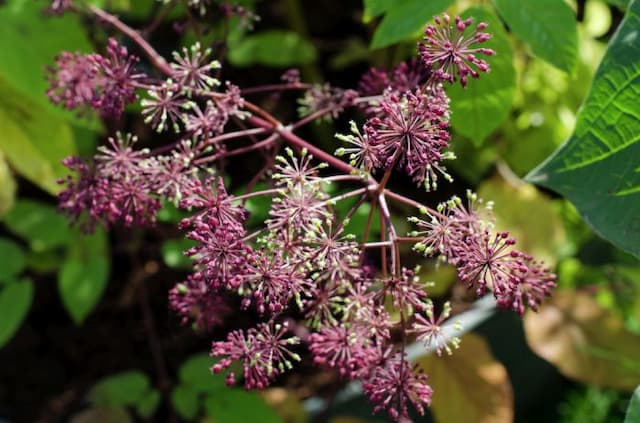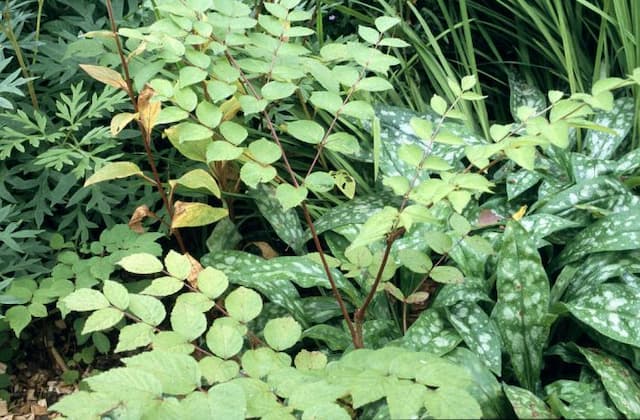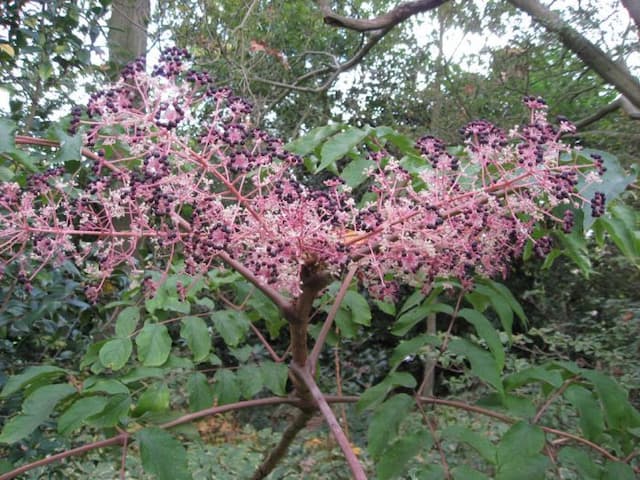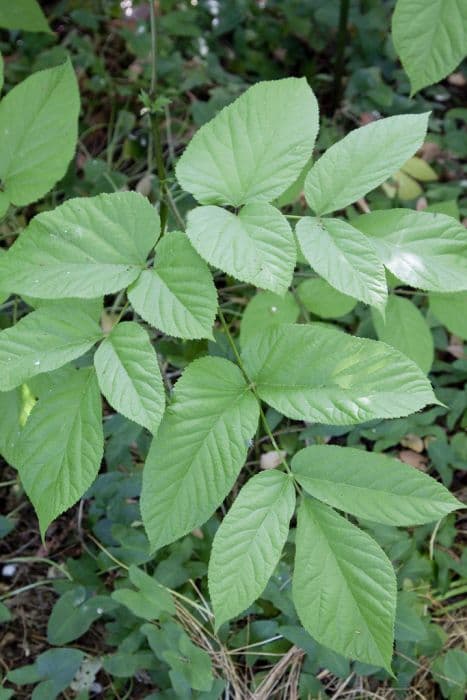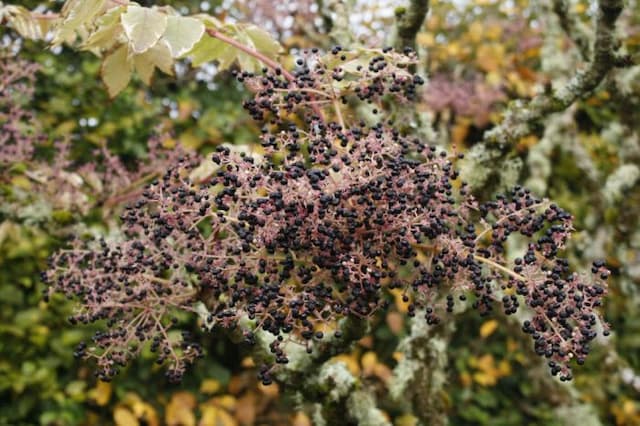English Ivy Hedera helix 'Congesta'

ABOUT
The plant known as "Congesta" is a variety of English ivy that is noted for its unique and compact appearance. It features densely packed clusters of small, deep green leaves that have the classic ivy shape with pointed lobes, although they might appear more curled than those of other English ivy varieties. The leaves are glossy with prominent veins, which can give them a somewhat ruffled or textured look. This particular ivy's growth habit is tight, creating a bushier and more congested appearance compared to other types of English ivy that tend to spread and climb more openly. The overall impression of the 'Congesta' is that of a lush, green and somewhat sculptural plant, its foliage offering a verdant and evergreen display. It is well-suited for small spaces or for creating dense green patches within a garden or as a houseplant, given its tendency not to sprawl widely.
About this plant
 Names
NamesFamily
Araliaceae.
Synonyms
English Ivy, Common Ivy, European Ivy, Ivy.
Common names
Hedera helix 'Congesta'.
 Toxicity
ToxicityTo humans
English ivy is considered toxic if ingested. Its leaves and berries contain saponins and other compounds that can cause adverse reactions in humans. Symptoms of English ivy poisoning may include abdominal pain, vomiting, and diarrhea. In severe cases, exposure can lead to breathing difficulties or a coma if a large amount is ingested. It's essential to seek medical attention immediately if ingestion is suspected.
To pets
English ivy is also toxic to pets such as cats and dogs. Similar to its effects on humans, the ingestion of any part of the plant can cause vomiting, abdominal pain, hypersalivation, and diarrhea. In severe instances, ingestion can result in ataxia, labored breathing, or even as severe as coma and death in pets. It is crucial to contact a veterinarian immediately if your pet consumes any part of the plant.
 Characteristics
CharacteristicsLife cycle
Perennials
Foliage type
Evergreen
Color of leaves
Green
Height
6-9 feet (1.8-2.7 meters)
Spread
1-3 feet (0.3-0.9 meters)
Plant type
Climber
Hardiness zones
5
Native area
Europe
Benefits
 General Benefits
General Benefits- Ornamental Appeal: Adds aesthetic interest to gardens, walls, and facades due to its dense, evergreen foliage.
- Low Maintenance: Requires minimal care once established, making it ideal for low-maintenance landscapes.
- Erosion Control: Helps prevent soil erosion on slopes and embankments with its robust root system.
- Wildlife Habitat: Provides shelter and nesting sites for birds and other small wildlife.
- Adaptability: Tolerates a range of soil types and conditions, from full sun to shade.
- Seasonal Interest: Offers year-round greenery, even in winter when many plants are dormant.
- Privacy Screen: Can be used to create a living fence or screen to increase privacy in gardens and yards.
 Medical Properties
Medical Properties- Expectorant: English Ivy (Hedera helix 'Congesta') has been used to help relieve cough and congestion.
- Anti-inflammatory: Its saponins may provide anti-inflammatory benefits.
- Antimicrobial: The plant contains compounds with potential antimicrobial effects.
- Antioxidant: English Ivy may have antioxidant properties due to its flavonoid content.
- Spasmolytic: It may help to relieve spasms, particularly in the respiratory system.
- Mucolytic: Can help in breaking down mucus, making it easier to expel.
 Air-purifying Qualities
Air-purifying QualitiesThis plant is not specifically known for air purifying qualities.
 Other Uses
Other Uses- Hedera helix 'Congesta', commonly known as English Ivy, can be used in topiary gardens due to its ability to be shaped and pruned into various structured designs.
- The plant can serve as a natural cooling mechanism when grown on walls, since its coverage can reduce the wall temperature by blocking sunlight.
- English Ivy can be used in crafting and holiday decorations, weaving the vines into wreaths or using them as a natural décor element.
- The robust vines of English Ivy can be used as natural ropes or binding materials in garden settings or for rustic crafts.
- Due to its dense growth, English Ivy can form privacy screens on fences or trellises in outdoor spaces.
- As a ground cover, English Ivy fights soil erosion effectively by stabilizing the ground with its root system.
- Live green curtains can be created indoors by training English Ivy to grow on indoor trellises or wire frameworks.
- Some cultures might use the vines of English Ivy in traditional ceremonies or as symbolic decorations for certain festivities.
- In photography and film, English Ivy is often employed to create a vintage or ancient ambiance when draped across old buildings or ruins.
- The leaves of English Ivy can be used for printing or stamping, by using them as natural stencils for artworks or creative projects.
Interesting Facts
 Feng Shui
Feng ShuiThe English Ivy is not used in Feng Shui practice.
 Zodiac Sign Compitability
Zodiac Sign CompitabilityThe English Ivy is not used in astrology practice.
 Plant Symbolism
Plant Symbolism- Connection: Known as English Ivy, Hedera helix 'Congesta' often symbolizes connection and friendship due to its clinging nature, which can represent our tendency to stick by our friends and loved ones.
- Eternity: The evergreen quality of English Ivy signifies eternity and everlasting life, hinting at the plant's ability to thrive year-round.
- Fidelity: Because it clings and grows steadfastly on various surfaces, it's often associated with fidelity, loyalty, and steadfastness in relationships.
- Protection: historically used in wreaths and decor to ward off evil spirits, English Ivy carries a symbolism of protection and safety.
- Survival: Its hardiness and adaptability make English Ivy a symbol of survival and resilience, thriving in various conditions.
 Water
WaterThe English Ivy requires consistent moisture, so it's best to water it whenever the top inch of soil feels dry. Depending on the size of the pot and the indoor environment, this might work out to watering approximately once a week with around 8 to 16 ounces of water. During the growth season in spring and summer, the plant might need more frequent watering. In winter, water less often, allowing the soil to dry out slightly more between watering. It's important not to let the ivy sit in water as this can lead to root rot.
 Light
LightEnglish Ivy flourishes in bright, indirect light but can also adapt to low-light conditions. It should be placed near a window that receives ample light but shielded from direct sun to prevent leaf scorch. North or east-facing windows are typically ideal spots for this plant as they provide the right light intensity without direct sunlight.
 Temperature
TemperatureEnglish Ivy prefers a cool to moderate temperature range, with an ideal range between 50°F to 70°F. It should not be exposed to temperatures below 50°F as cold drafts can damage the leaves. Avoid placing the ivy near heat sources or in extreme heat, which could stress the plant.
 Pruning
PruningPruning English Ivy encourages bushier growth and helps maintain its desired shape. It should be pruned in spring or early summer, when new growth is most vigorous. Cut back any overgrown or unwanted vines, and trim any dead or damaged leaves to keep the plant healthy. Ivy can be pruned as often as needed to maintain its size and shape.
 Cleaning
CleaningAs needed
 Soil
SoilEnglish Ivy 'Congesta' thrives best in a well-draining soil mix with a pH range of 6.0 to 7.5. A mix of two parts peat moss or coco coir, one part potting soil, and one part perlite or sand is ideal to ensure proper drainage and aeration. Regularly check and maintain the pH level to ensure the plant's health.
 Repotting
RepottingEnglish Ivy 'Congesta' should generally be repotted every two years to refresh the soil and accommodate root growth. However, if it's growing rapidly or looks root-bound, annual repotting may be necessary.
 Humidity & Misting
Humidity & MistingEnglish Ivy 'Congesta' prefers high humidity levels around 40-50%. It will benefit from regular misting or being placed in a naturally humid environment like a bathroom, ensuring that the leaves are not left wet for prolonged periods.
 Suitable locations
Suitable locationsIndoor
Place English Ivy 'Congesta' near a window with indirect light; keep soil moist.
Outdoor
Plant English Ivy 'Congesta' in shade to partial sun; water regularly.
Hardiness zone
4-9 USDA
 Life cycle
Life cycleThe English Ivy 'Congesta' starts its life as a seed, spreading through bird droppings or deliberate planting. Germination follows, with roots and shoots emerging, usually requiring moist, shaded conditions typical of forest understories. The juvenile stage is characterized by rapid vegetative growth, where it forms dense mats of lobed, evergreen leaves and adheres to surfaces with root-like structures called holdfasts. As it matures, the plant enters the adult stage, displaying unlobed leaves and woody growth; it is during this phase that it climbs higher, seeking light. English Ivy 'Congesta' will then produce small, inconspicuous flowers favored by insects, followed by blue-black berries which are toxic to humans but consumed by birds, completing the reproductive stage and dispersal cycle. The plant is capable of living for several years, often remaining in the adult vegetative stage for long periods before flowering.
 Propogation
PropogationPropogation time
Spring-Summer
The most popular method of propagation for the English Ivy 'Congesta' is through stem cuttings. This can be done at pretty much any time of year, but the best results are usually achieved in the spring or early summer when the plant's growth is most vigorous. To propagate English Ivy 'Congesta', a gardener would take a cutting of about 4 to 6 inches (approximately 10 to 15 centimeters) from a healthy plant, ensuring there are at least a few leaves on the cutting and that the bottom end is cut just below a leaf node. The lower leaves are then removed, and the cut end is dipped into rooting hormone powder to encourage root growth. The cutting should then be placed in a pot filled with a mix of half peat and half perlite or sand to provide excellent drainage. It's vital to keep the soil lightly moist and to provide indirect light until the cutting has rooted, which usually takes a few weeks. Once the new roots have formed, the cutting can be transplanted into a regular potting mix and treated as a mature plant.




